 Creating an interesting, engaging, and fun encounter that moves an adventure along is a challenge for any adventure designer. Creating many of them, while making them all interesting and diverse, is an even greater challenge. We might think that once we’ve created all of these wonderful encounters we’re set—that we’ve our completed adventure. Alas, that’s not the case!
Creating an interesting, engaging, and fun encounter that moves an adventure along is a challenge for any adventure designer. Creating many of them, while making them all interesting and diverse, is an even greater challenge. We might think that once we’ve created all of these wonderful encounters we’re set—that we’ve our completed adventure. Alas, that’s not the case!
Think of an action-adventure movie. Even if you’re an adrenalin junkie—insisting on bigger and more complicated thrills, car chases, and explosions—without some calm or contemplative or comedic moments throughout the film, those thrilling moments don’t register as well as they could. Storytelling follows narrative guidelines that are similar to the laws of physics governing a rollercoaster: for each spurt of kinetic energy that brings the thrills, there needs to be a buildup of potential energy that makes everything possible.
A good adventure, like any good story, needs to flow like a rollercoaster. We need dips and loops and turns and rises and falls. We need this not just to pace the adventure well—we need to also keep an eye on the game mechanics of the adventure: we must ensure the adventure is actually playable, allowing the mechanics to highlight the story flow rather than working against it.
The Beat Goes On
In physics we talk about potential energy and kinetic energy, but in storytelling we talk about beats. “Beat” is a term used to mean different things depending on the storytelling medium, and often practitioners within the same medium, be it prose, poetry, screenwriting, etc., have varied opinions on what beats are. For some storytellers, for example, a “beat” refers to a specific plot point within the story. For others, it refers to the tone of a scene. Others have even more unique ways to define and categorize beats. Below are some examples.
The characters’ encounter with the minion spawn of the boss vampire would be a story beat, also known as a plot point—this is a “what happens?” portion of the story. For other storytellers, a “beat” refers more to the intensity or emotion of the plot points rather than what exactly happens. These might be called “up-beats” for intensifying actions or “down-beats” for slowing or falling actions. These might also be referred to by the mood or atmosphere of the beat: the dichotomy between light and dark, between hope and despair, between work and rest.
Regardless of what the beats are called or how they are defined, we can think of them as useful tools in creating a structurally sound D&D adventure. In fact, by assigning our own unique and varying definitions of beats, we can use the concept of the beat in multiple ways for different aspects of our adventure, especially when we start thinking in terms of linking encounters together to form a cohesive and well-structure adventure experience.
When to Think Beats
Since beats are tied to individual encounters, it’s best to start thinking about beats while you are outlining your adventure and creating the encounters. However, it’s often hard to get a perfect view of the overall beat structure of an adventure until you have all the encounters designed and start putting them together.
So think of beats early, but don’t fret too much about them. If you’re thinking in terms of varying the focus of encounters in terms of the pillars of play, in terms of prompting different types of actions, and not hammering on the same types of plot points, that’s good enough. You’ll have time, when you go back and review or revise your adventure—or even while playtesting your adventure—to make sure that the flow of the adventure is hitting the right beats at the right time.
When you do start to think of your adventure as a whole entity rather than as a group of separate encounters, then you can look at how your encounters flow together. What follows is an examination of the different types of beats in an adventure, how they work in an adventure, and how they can be managed to make an adventure that offers as much diversity and pacing for the greatest number of player types.
Beats as Plot Points
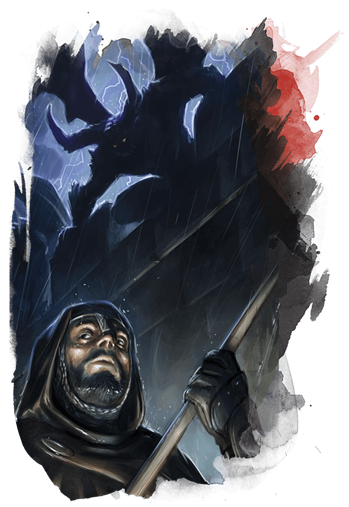 In an adventure, just as in a story, events take place that should move the story forward. Those events sometimes move the action and plot forward quickly, and sometimes they move more slowly. In some instances, as with red herrings and dead ends, they can fail to move the story forward while still being interesting and dramatic: they can deepen the story without actually moving closer to a resolution.
In an adventure, just as in a story, events take place that should move the story forward. Those events sometimes move the action and plot forward quickly, and sometimes they move more slowly. In some instances, as with red herrings and dead ends, they can fail to move the story forward while still being interesting and dramatic: they can deepen the story without actually moving closer to a resolution.
In order to keep the players interested and invested in the story being told in the adventure, it’s best to offer diversity in the plot points covered by a series of encounters. For example, if the main goal of seven encounters in a row is finding a piece of information that moves the characters to the next encounter, that is hitting the same type of plot point over and over and over again. Even if there is a diverse array of encounter types within those seven encounters—such as interspersing roleplaying, exploration, and combat within them—it’s still going to wear on the players to have that same goal and the same type of plot point be the highlight in each encounter.
To avoid plot-point fatigue, break up encounters with the same type of plot points with something different. Make the goals or the focus of consecutive encounters differ. Put in an encounter that calls for deepening understanding of an NPC, or touching on the personal goals of a particular character, or just simply surviving an ambush: this eliminates the monotony of the same story beat in many consecutive encounters.
Beats as Actions Types or Pillars
Just as too many consecutive encounters with the same types of plot points can be grating, so can too many consecutive encounters employing the same action types or pillars of play. The simplest way to alleviate this potential problem, of course, is to vary the encounter types by varying the pillars used: moving between combat, exploration, and roleplaying.
Sometimes, however, we might be designing an adventure where we have no choice but to use the same pillar-type encounter several times in a row. For example, in a dungeon crawl written to be played in a specific amount of time, we might have little choice but to have four combat encounters in a row, culminating in a fight with the boss monster. In this case, it’s still possible to vary the encounters enough so the players don’t feel like it’s the same kind of encounter four times in a row.
The first encounter could be written so the characters have to break through a barrier (attack), then the next encounter might be one where the characters have to defend that same barrier they just pierced (defense), while the next encounter sees them having to fight enemies while escorting prisoners through unknown tunnels while keeping them calm (movement and roleplaying). This allows the same pillar to be used but allow for variation of action types within the same pillar.
This sort of internal variation is equally possible within the other pillars as well. For consecutive roleplaying encounters, changing the action-type beat means changing the situations and allowing the characters to react. For example, rather than having several consecutive roleplaying encounters where the characters talk with the members of a town council to gain information or convince them of some course of action, change the action types within those encounters. One council member might only trust people with a strong knowledge of history, forcing the characters to prove themselves with more than just the standard Persuasion check. Another council member might hold a secret grudge against one of the characters, planting illegal goods or evidence of a crime on that character, forcing the characters into a defensive posture in the middle of the negotiations.
Beats as Emotional Notes
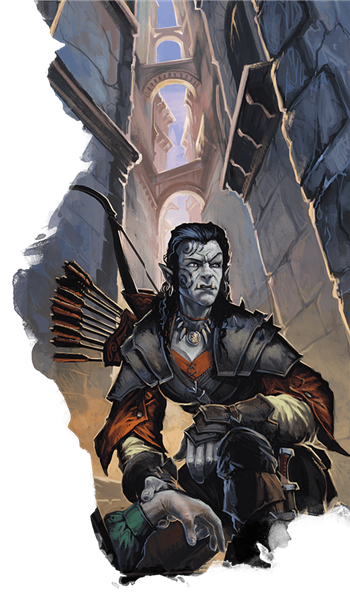 For players especially invested in the story of their own unique characters, the emotional highs and lows of an adventure—the emotional beats—are just as important as the plot points or the action types. These emotional beats exist within the forward-driving action of the adventure, as well as within the individual story arcs of each character. But, as we’re looking at adventure writing for characters that we have no way of knowing, we’re going to focus on the emotional beats of the adventure itself.
For players especially invested in the story of their own unique characters, the emotional highs and lows of an adventure—the emotional beats—are just as important as the plot points or the action types. These emotional beats exist within the forward-driving action of the adventure, as well as within the individual story arcs of each character. But, as we’re looking at adventure writing for characters that we have no way of knowing, we’re going to focus on the emotional beats of the adventure itself.
Storytellers have a hard time telling a great story when the emotional tone of the action is level. Mysteries need both concealment and revelation. Drama needs both desire and danger, hope alternating with struggle. Push too much on one side of that balance, and you drive your audience away with boredom. Push too much on the other, and you risk driving them away with despair or incredulity.
Just as adventure beats can have narrative weight and action structure, they can also have emotional tone. That emotion needs to be carefully managed. Too much of a single tone leads to monotone, giving us the adventure-design equivalent of a droning teacher, or in the case of too much action, a shrieking hyperactive toddler.
As you put your encounters together to form your adventure, note the emotional tone of the encounter. Are you balancing joy with angst, comedy with tragedy, hope with despair, reward with loss? While it is fine—even recommended—to have the overall adventure’s tone flow in a particular direction, the line should not be a straight one. Undulations are where the rollercoaster is the most fun.
Beats as Game-Mechanical Units
All of the beat types mentioned already are vital to the story flow of an adventure, but we need to remember that a D&D adventure must work as a game. Regardless of how people use the rules, D&D is a resource management game: it has hit points and hit dice that can run out, spell slots and ki points and sorcery points that are spent and regained, and many resources that refresh after short or long rests.
This concept of the short and long rest, and the resources that hinge on them, are often inconvenient in terms of storytelling but vital to the game. How many times does it make no sense—either in terms of plot or tone—for the characters to take a long rest, but they do anyway because they are low on resources? Or how often have adventures seemed far too easy because parties took long rests after each encounter, ensuring their maximum efficiency each time they were tested?
When used well, however, the pacing of these game-mechanical beats can add to the drama of an adventure rather than detract from it. Rests can intensify heroic action, heightening the stakes in an adventure, enforcing consequences for hard, narrative-driven choices. If there is no narrative victory without danger of failure, then encounters must be arranged and molded to provide that danger, or to weigh one potential negative outcome against another.
I wish there was a simple way to make sure adventure flow always balanced this, but there isn’t. The most effective way to gauge the flow is simply to stop and examine the design at the end of each encounter. Ask yourself these questions:
- What happens if the characters take a long rest here?
- What happens if the characters take a short rest here?
- What happens if the characters take no rest here?
- For each of the questions above, what are the potential consequences of each?
- If there are consequences for each, how do we make the characters cognizant of the potential consequence?
- What changes must be made to the previous, or future, encounters in order to make the flow of the adventure interesting, both as a game and as a story?
Chapter 3 of the Dungeon Master’s Guide and chapter 2 of Xanathar’s Guide to Everything give advice on creating encounters and determining how many encounters of different difficulty levels a party should manage between rests. While these guidelines are useful, they are no substitute for experience… and for playtesting!
Continuing Our Adventure
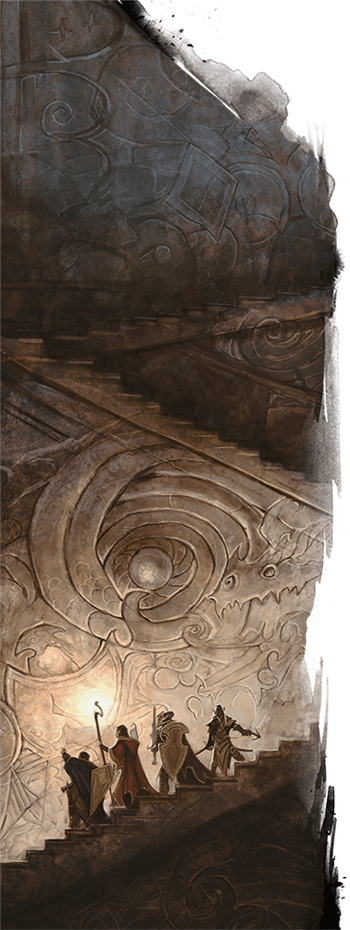 In the previous installment of this series, we created the first encounter of our adventure. This encounter used all three pillars of play and introduced the threat the characters are about to face. As a Medium difficulty encounter for six 5th-level characters, it shouldn’t be so overwhelming that the characters would need a long rest to continue. So based on the points raised in this article, let’s talk about adventure flow and decide what to do next.
In the previous installment of this series, we created the first encounter of our adventure. This encounter used all three pillars of play and introduced the threat the characters are about to face. As a Medium difficulty encounter for six 5th-level characters, it shouldn’t be so overwhelming that the characters would need a long rest to continue. So based on the points raised in this article, let’s talk about adventure flow and decide what to do next.
Since we hit all three pillars within the first encounter, we don’t have to worry about which action beat to hit next: we have a lot of options. We may, however, want to focus on a simpler, more straightforward encounter to counterbalance the initial, elaborate one. The tone was quite gruesome and mysterious, with the introduction of the mutated monsters that the characters (and the players) never witnessed before. This could raise many questions in the characters’ minds. However, they likely rescued someone during the encounter who can provide some answers, so if we want to maintain the mystery of the mutated creatures, we can stretch that out for at least a few more encounters.
My next planned encounter was the characters entering the base after questioning the rescued NPC. To keep the mystery going, I want to make this encounter a disconcerting experience, but I don’t want another combat, so I’m narrowing down my choice to an exploration or a roleplaying encounter. If I knew the characters that would be playing my adventure, I might draw upon their personal backgrounds and traits to create a tailor-made roleplaying scenario that reels them into the scenario more personally, but as this is an adventure for publication, I am going to go the exploration route instead.
Knowing that I’m going to be hammering the mystery and gruesomeness of their foes throughout the adventure, I want to highlight the juxtaposition of the known and unknown in the next encounter. Luckily, I have a tool at hand: the rescued NPC Jodice Farseer. He can provide a rough sketch of the interior of the base (and I’ll make a note to myself to provide this as a handout for the characters, with handwritten marginalia from Jodice for authenticity). Providing the characters with the known (a layout of the base) will be the top of the rollercoaster, and when I turn that on its ear with some unknown changes and surprises, the ride down will be all the more thrilling.
Encounter 2: The Things in the Mist
(Let’s start to create Encounter 2 of our adventure.)
Assuming the characters rescue Jodice, he supplies them with helpful information. Use the bullet points below to guide the conversation:
- Jodice is a guide who assists the relic hunters who work at the base. He hasn’t been working for the group long, but he knows enough to provide a rough description of the base. (See Handout 1.) (Note that we’ll need to create this handout after we create the encounters within the base.)
- He was returning from a mission leading 2 hired guards and 4 archaeologists when he saw a huge spider emerge from the base’s entry tunnel. He remembers being assaulted by the spider, then he awoke chained to the post where the characters found him. He’s not sure how much time passed, but it’s been at least 24 hours based on the position of the sun.
- In the 8 rooms that comprise the base, there are anywhere from 10 to 40 individuals working at any given time. He’s not sure how many people are currently in the base. The 30 corpses strewn across the field indicate there can’t be many left.
- If the characters ask about the people whom Jodice just returned with, the guide admits he doesn’t see them among the corpses on the hillside. None of the corpses were here before he was attacked.
- On the mission he just returned from, the archaeologists uncovered a cache of ancient, ebony-carved statuettes of spiders. These artifacts are not present.
Entering the Tunnel
The tunnel at the top of the hill, which leads down to the underground base, is roughly 10-feet wide and equally tall. It slopes down at a 35-degree angle. It’s currently filled with an unnatural fog that makes visibility impossible. If asked, Jodice can tell the characters that the tunnel slopes down for roughly 150 feet, then levels out for another 100 feet, ending at a wooden door to the base. The door is kept locked from the inside, and entrance is only allowed by someone providing the passcode. Jodice knows the passcode (“Open the red book”), but it is irrelevant now (a fact that will be made clear in encounter 3, next time).
When the characters enter the fog-filled passage, they must deal with a series of traps there.
What’s Next?
In the next installment, we’ll take a deeper dive into elements of encounters and adventures, talking about concepts such as monsters, traps, hazards, obstacles, puzzles, and character choices. We’ll look at each of these as distinct tools in the adventure creator’s toolbox, talking about how to use them and pitfalls to avoid. We’ll also delve into different methods of resolution, thinking about how to determine success and failure, and the consequences of both within those different resolution methods. As an example, we’ll create the exploration and traps to complete the encounter above.
Create A Brand-New Adventurer Acquire New Powers and Adventures Browse All Your D&D Content
 Shawn Merwin's professional design, development, and editing work in D&D has spanned 20 years and over 4 million words of content, ranging from third to fifth edition. His most recent credits include the Acquisitions Incorporated book, Baldur’s Gate: Descent into Avernus, and Storm Lord’s Wrath. He is also the Resource Manager for the D&D Adventurers League’s Eberron: Oracle of War campaign. Shawn hosts a weekly D&D podcast called Down with D&D, and he holds an MFA in Creative Writing from Vermont College of Fine Arts. You can follow his ramblings and musing on Twitter at @shawnmerwin.
Shawn Merwin's professional design, development, and editing work in D&D has spanned 20 years and over 4 million words of content, ranging from third to fifth edition. His most recent credits include the Acquisitions Incorporated book, Baldur’s Gate: Descent into Avernus, and Storm Lord’s Wrath. He is also the Resource Manager for the D&D Adventurers League’s Eberron: Oracle of War campaign. Shawn hosts a weekly D&D podcast called Down with D&D, and he holds an MFA in Creative Writing from Vermont College of Fine Arts. You can follow his ramblings and musing on Twitter at @shawnmerwin.
Want to read more of this series? Click on the "Let's Design an Adventure!" tag to see the full series.








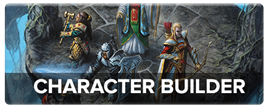
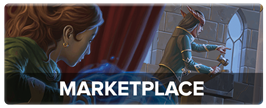

-
View User Profile
-
Send Message
Posted Feb 26, 2020Great article!
You should add a link to the previous installment here :P
-
View User Profile
-
Send Message
Posted Feb 27, 2020Thanks for the suggestion. You can also look at all previous entries in the Let's Design an Adventure series by clicking on the "Let's Design an Adventure!" tag at the bottom of this article.
-
View User Profile
-
Send Message
Posted Feb 27, 2020I'll be honest, I didn't even know those were clickable (I know you mention it in the bolded statement right before the tags but I sorta skimmed over that :P). I'm used to the spell and monster listings where the similarly formatted tags are not clickable.
-
View User Profile
-
Send Message
Posted Feb 27, 2020This is great advice!
-
View User Profile
-
Send Message
Posted Feb 27, 2020Very useful. I’ve always used some concept of beats, but I’m pretty new at being a dm so I haven’t known exactly what to use as beats. I hope to at some point incorporate all of these I haven’t used before.
-
View User Profile
-
Send Message
Posted Feb 27, 2020There's some good points here, but as V2Blast pointed out, references should always be included. The flow of this article made it difficult to read, as it seemed to ramble from point to point without much organization. It also seems to me the Author is more accustom to writing railroad-style adventures, where the DM is supposed to assume the characters make the choices and interactions the story calls for. Tis a foolish DM who thinks they can force characters down specific story paths. I noted the same style in Descent into Avernus but my feedback was rebuffed. For example, what occurs if the party didn't rescue Jodice? Or decided Jodice was acting in a suspicious way, and thus to not trust them? You missed an opportunity to talk about using the NPC reaction table.
Your sense of timing also clashes with guidance from the DMG under chapter 3 creating adventures, which states "The Adventuring Day: Assuming typical adventuring conditions and average luck, most adventuring parties can handle about six to eight medium or hard encounters in a day. If the adventure has more easy encounters, the adventurers can get through more. If it has more deadly encounters, they can handle fewer.".
The way this article reads it seems you aim more for 1-2 such encounters per day (prior to a long rest). As a DM one of the management issues I often run into is when a party goes full-out on most encounters. This tends to cause them to consume their resources at a greater rate so they run out of spell slots, class & sub-class features, etc. early in the day (game time) and essentially have to "hang out" until a reasonable time to retire for the night, thus restoring those abilities with a long rest. This is why, especially as adventure groups go up in level (and thus ability), you have to start thinking in terms of planning small multiple encounters to bleed the resources out over time, rather than some massive fight that causes them to drain most of what they have. Save those kind of epic (boss) fights for the end of adventure arcs.
Further, the article suggests the DM take into consideration what happens if the party takes a long rest here, or a short rest, and inferrs the DM needs to take into consideration, if not dictate, the encounters based on party resources. No, no, NO! You are taking player agency away. If you coddle the players by making sure the encounters are tailored to your assessment of their current resources, you are stealing from them the right and responsibility of deciding when to spend their resources, or not to spend them. That's a decision to leave to the players, and allows them to be responsible for those choices, and the consequences they bring.
Kudos for great points about the rise and fall of beats, and the emotional journey (your example: a rollercoaster, is a great one) we generate when playing. But I think this article would of been much better if you had generalized into a few points about why pace is important, and the use of beats, followed by multiple examples. Rather, this article is mostly points and sub-points, with one example that has two parts.
I think you also missed an opportunity to introduce or re-enforce the concept of the cliff-hanger. I've found one of the best tools for keeping the players excited and engaged is to leave the story hanging at the end of a session. Some great, impending fight; a super-villain who just revealed themselves and pushed the lever on the machine of ultimate doom, that sort of thing.
Overall: 3 out of 5. Some good ideas, but messy layout, some conflicts with guidance from the DMG, and a number of missed opportunities to re-enforce the overall theme of designing adventures.
-
View User Profile
-
Send Message
Posted Feb 28, 2020Thanks for the feedback. I'll be addressing some of this in my final installment.
-
View User Profile
-
Send Message
Posted Feb 28, 2020IMHO for me, this is a master class in storytelling. Great article!!
-
View User Profile
-
Send Message
Posted Feb 29, 2020I agree with this, this approach calls for some serious railroading, because you'll be nudging the characters into one of the solutions you have already foreseen. The idea about hooks, beats and cliff hangers is important, but you need some space for improvisation. As I mentioned in another comment, I don't know if this is a cultural thing, but planning for everything, just in case, seems to be a theme that is recurrent, particularly when american DM's share their tips. I'd like to see more content on preparing for the stuff you cannot possibly foresee, about improvisation, and about being in the moment when you play, instead of reading a 20 page adventure guide for every session.
-
View User Profile
-
Send Message
Posted Feb 29, 2020Yes and no, this is good for writing a book, but when you roleplay, you are supposed to tell a story together with your players. Not read from a book.
-
View User Profile
-
Send Message
Posted Feb 29, 2020Maybe someday I'll write articles about that: "Preparing for the Stuff you Cannot Prepare For." But not today! In the meantime, here is one of my favorite compilations of articles on Improv in GMing: https://enginepublishing.com/unframed-the-art-of-improvisation-for-game-masters
-
View User Profile
-
Send Message
Posted Feb 29, 2020Great article. I especially dig the advice on intensifying and bleeding the tension encounter to encounter. A very important skill for any storyteller. Ignore the detractors and write on!
-
View User Profile
-
Send Message
Posted Mar 1, 2020its a simple answer...
they will always try to take a long rest after each fights.
reason being, the classic, the extremely greedy spellcasters !!!
"i need a long rest, i'm spent !" -wizard
"i cannot heal you for i am spent" -cleric
but then you look at their spell sheet and realise they stil have all 1st level spell slots as well as 2nd and 3rd spell slots.
you are spent you say ? yet you still have at least half of your spell slots.
yeah but all my big spells are gone thus i won't be able to make a difference at higher level encounters.
and i'm like... learn to *curse word* use your cantrips man. we continu, with or without you !
and then my character continues on.
weirdly, they had plenty of fight left in them on the next 3 fights.
but they still say they run on fumes somehows !
-
View User Profile
-
Send Message
Posted Mar 1, 2020its simple an answer though. we don't need an article about how to improv your way into what you know !
exemple: i have this villain trying to corrupt the place, he has cultist and has bandits working with him. i created the vilage the players are in. i was expecting them to fight the cult, not join into them. so how do i deal with this problem ? the simple solution is, improv my way into the situation, but how do i prepare for it ?, i don't ! i already know everything i need to know to see whats gonna happen. yes i am improvising the thing as i go. i had not planned for them to join in the cult. let alone them bringing an NPC to the cult and sacrificing her. but heres what i knew fromt eh get go...
- i knew the cult was sacrificing people for the villain.
- i know the village and whos onto the it or not.
- i know who the girl they brought in, is.
- i know whats the villain plot and thus i can go forward with it reguardless of what the players do in the cult.
all these are things i had prepared in advance. and with only those, i know whats gonna be the next step at all times.
you don't need to prepare for everything, you don't need to... you only need to know the basics of what the villain wants and how he does it. you also need the environment informations. you are the DM, you created that environment, thus you probably already have everything you need reguardless of what they throw at you.
the real answer to your question is...
Q: how do i prepare for improv situations ?
A: You don't ! you already know everything you need to lead them into whatever bullshit they throw at you.
Exemple of critical role. the group often sends matt into disarray and into improv. but why is he not suprised or unprepared for ? do you really think he planned for everything ? nope he didn't... he only prepared the environment, the villain plot. and that was it. the rest comes to him as he goes, and he's not lost because he already knows what he needs to know and that is the villain and the environment.